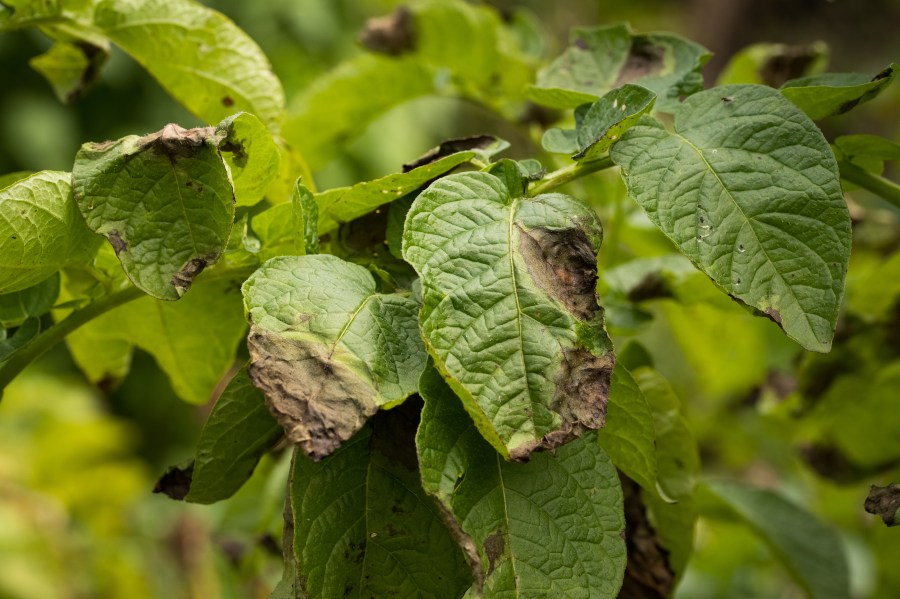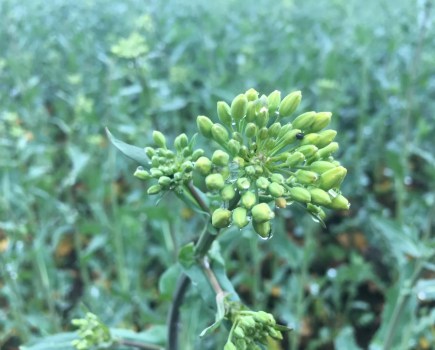Following the wettest July since 2009, reports of potato late blight are on the up, with experts warning 2023 could prove a high pressure year.
According to the Met Office, the UK received 170% of expected rainfall for July with wet weather continuing into August. As of the middle of this month, Monitoring service, Fight Against Blight, reported 120 crop outbreaks which puts 2023 on track to be high pressure along with 2019, 2012 and 2007.
Sample screening
The James Hutton Institute runs Fight Against Blight with support from industry sponsors. Dr David Cooke of the institute says it’s been challenging to keep on top of samples. “We receive samples of fresh lesions, isolate and characterise the sample. We also do DNA analysis on what we receive,” he explains.
“The aim is to spot changes in the blight population as the season progresses so that spray programmes can be adapted based on the present genotypes. EU_43_A1 is our big concern because it’s resistant to the carboxylic acid amide (CAA) group of fungicides, which includes mandipropamid.
“The key finding so far this season is that we’ve not found it yet. We plan to conduct fungicide sensitivity testing on the 2023 isolates in the coming weeks.”
Even though EU_43_A1 hasn’t been found this season, that doesn’t mean the bight risk is low, because 36_A2 is one of the dominant strains, stresses David. He says it’s been present for a few years and is very aggressive, which poses challenges if it takes hold.
Alternating modes of action
“Trying to firefight blight is very difficult, but the chemistry should continue to be used wisely, especially concerning the longer-term risk of EU_43_A1. We don’t want other actives struggling under high pressure being misused. It’s tempting for growers to keep using the products which give the best control, but they must use a range of fungicides,” he says.
According to David, it’s not all bad news. “The canopy has finished growing so at least when a fungicide is applied it’ll protect all of the leaves for a period. I’d encourage growers to keep an eye on the lower canopy to ensure there’s no residual blight there. This could be the case following frequent heavy rainfall, which spreads the disease down the canopy.”
Zoospore production
UPL’s Geoff Hailstone says lower temperatures encourage the production of zoospores, and combined with soil moisture, there’s a high risk that foliar blight could become an issue in the soil.
“We should now be mid-way through blight programmes with most crops at the canopy complete stage,” says Geoff. “When outbreaks are found in the field, the priority must be to clear these up and prevent the spread as soon as possible. Where this is the case, Proxanil (cymoxanil+ propamocarb) should be included in a tank mix.
“That’s because cymoxanil is known to be one of the few actives with kick-back activity and it has a very low risk of developing resistance. Propamocarb has strong anti-sporulant activity, good movement in the plant, and is only active in the carbamate resistance group,” he says.
Geoff explains that if foliar blight is active in the canopy, especially if conditions are favourable for zoospore production, then the risk of resistance developing can be particularly high. “I’d recommend continuing to include mancozeb for resistance management and to protect uninfected leaves. Although mancozeb only has protectant activity, it still has a role in controlling outbreaks when mixed with curative products.”




